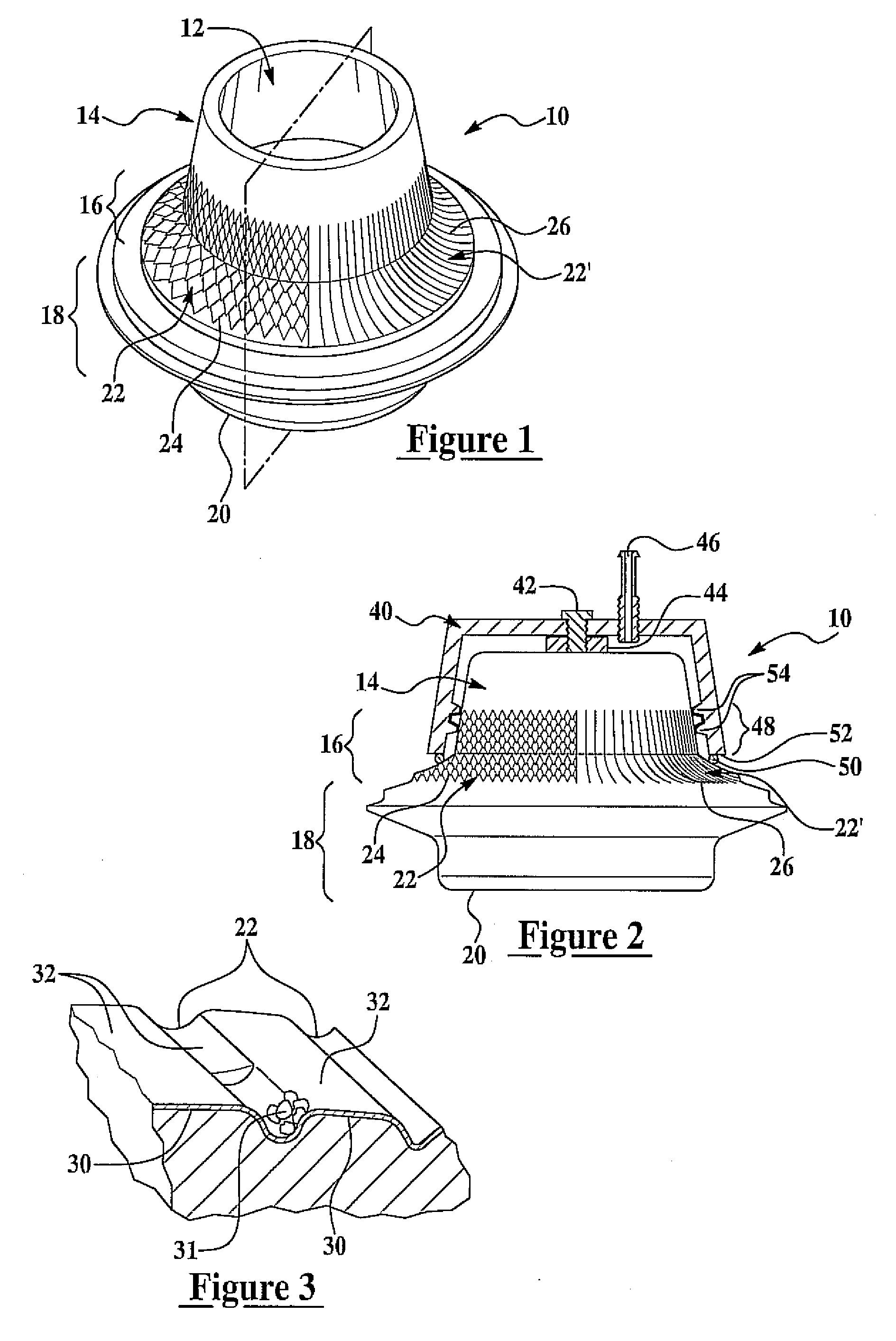Percutaneous access device system facilitating cell growth thereon
a percutaneous access device and cell growth technology, applied in the field of percutaneous access devices, can solve the problems of affecting the growth and maintenance of new cells, affecting the integrity of tissue culture, and requiring complex and time-consuming tasks, so as to facilitate autologous cell growth, and promote autologous cell growth
- Summary
- Abstract
- Description
- Claims
- Application Information
AI Technical Summary
Benefits of technology
Problems solved by technology
Method used
Image
Examples
Embodiment Construction
[0012] The present invention has utility as a protective assembly for a portal for the coupling of a permanent or semi-permanent medical intervention, the portal having an interior bore through which communication is maintained between the portal recipient and external medical equipment. As a result, the conveyance of electrical signals, pneumatic drive power, or biological fluids is facilitated. Such portals are routinely used in conjunction with mechanical auxiliary ventricles, chronic ambulatory peritoneal dialysis, prosthetic limb anchorage to an amputation stump, cochlear or other neurological stimulators, drainage tubes, and vascular access lines as exemplary of instances in which such a portal is used. Exemplary of such portals are those detailed in U.S. Pat. Nos. 4,634,422; 4,668,222; 5,059,186; 5,120,313; 5,250,025; 5,814,058; 5,997,524; and 6,503,228. Such devices are collectively defined herein as percutaneous access devices CPADs).
[0013] The stabilization of a PAD withi...
PUM
 Login to View More
Login to View More Abstract
Description
Claims
Application Information
 Login to View More
Login to View More - R&D
- Intellectual Property
- Life Sciences
- Materials
- Tech Scout
- Unparalleled Data Quality
- Higher Quality Content
- 60% Fewer Hallucinations
Browse by: Latest US Patents, China's latest patents, Technical Efficacy Thesaurus, Application Domain, Technology Topic, Popular Technical Reports.
© 2025 PatSnap. All rights reserved.Legal|Privacy policy|Modern Slavery Act Transparency Statement|Sitemap|About US| Contact US: help@patsnap.com

